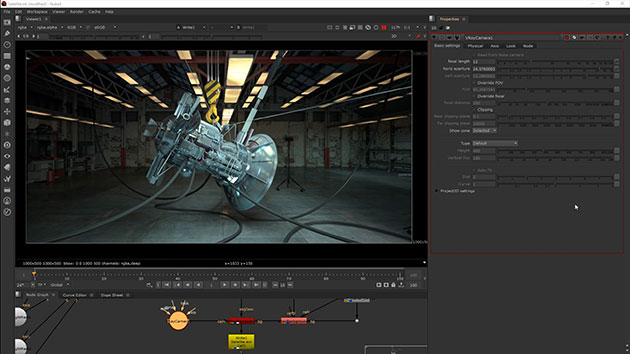Chaos Group said its new release of V-Ray 3.3 for Nuke brings node-based VR support and GPU-accelerated rendering to The Foundry's compositing platform for the first time.
The company emphasized that V-Ray for Nuke gives compositors the ability to make changes — lighting, shading and rendering — to any 3D asset right inside their comp. "When people think of Nuke, they usually don't think of rendering," said Chaos Group CTO Vlado Koylazov in a prepared statement. "Now artists can create a 3D scene using the same nodal workflow used throughout Nuke."
Click image to load a higher-resolution version.
V-Ray Standalone integration and the new VRayTranslator node give Nuke users access to bucket, progressive and V-Ray RT rendering. A new VRscene node will help move scene files from V-Ray for 3ds Max and Maya to Nuke or vice-versa, the company said, allowing V-Ray scene files to be previewed and controlled anywhere in that pipeline.
The new version also includes the latest updates to V-Ray's core engine, including variance-based adaptive sampling for noise reduction. V-Ray 3.3 also has two new cameras that cover spherical and stereo cube maps for creating VR environments. All new features, changes, and bug fixes are listed in the release notes.
V-Ray 3.3 for Nuke is a free update for existing V-Ray for Nuke customers; V-Ray for Nuke is available for $1,040. It supports 64-bit Nuke and NukeX v7-9 running on 64-bit Windows 7-8, 64-bit Red Hat Enterprise Linux 6 WS or newer, and 64-bit CentOS 6 or newer.
Chaos Group V-Ray: www.v-ray.com
Did you enjoy this article? Sign up to receive the StudioDaily Fix eletter containing the latest stories, including news, videos, interviews, reviews and more.












Leave a Reply